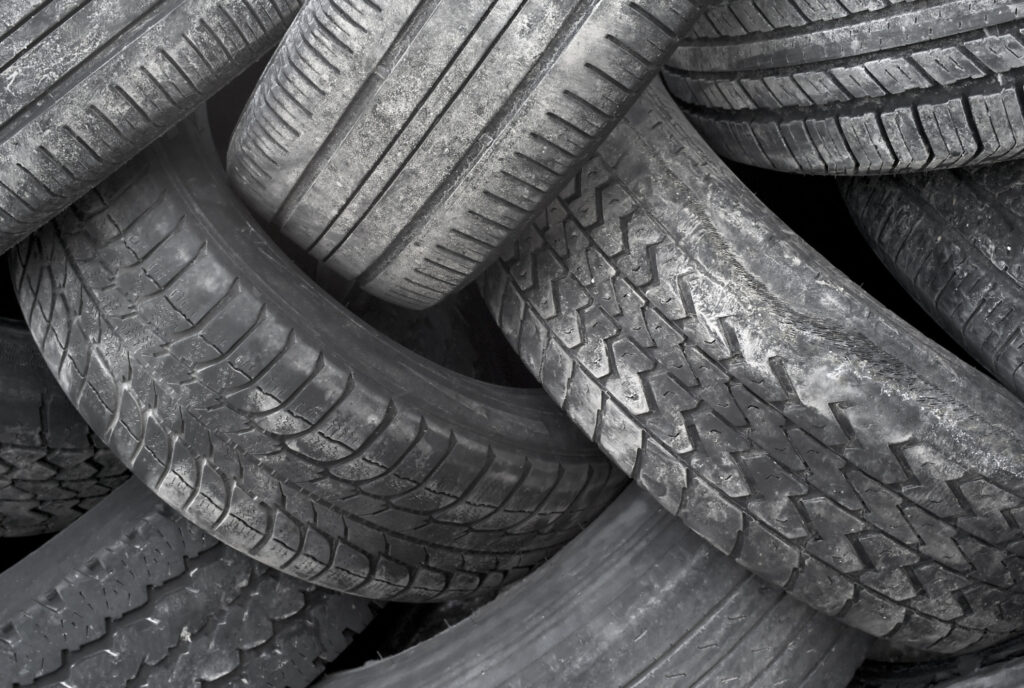Canadian tire recycling programs outpace U.S.
TORONTO, Ont. – Canada is recycling a larger share of scrap tires than the U.S., as the American market struggles to keep pace with its stockpiles.
Almost 76% of U.S. tires were recycled into products like rubber-modified asphalt, automotive products, and landscaping mulch, according to the U.S. Tire Management Association’s 2019 Scrap Tire Management Report. That’s down from 96% in 2013.

In contrast, the Canadian Association of Tire Recycling Agencies reported a 111% diversion rate in 2018, and an eight-year average of 104%, as the industry works through available stockpiles.
Canadian totals for 2019 are scheduled to be released in coming weeks.
“Three decades after we successfully eliminated 94% of the over 1 billion scrap tires stockpiled around the (U.S.), this report reveals that efforts to find and develop new uses for scrap tires have stalled,” said Anne Forristall Luke, president and CEO of the U.S. Tire Management Association (USTMA).
“We must take immediate steps to grow new and existing markets to recycle 100% of scrap tires. This not only protects our health and the environment — it drives innovation and jobs.”
About 56 million scrap tires are left in American stockpiles, particularly in states including Arizona, Colorado, Michigan, New Jersey, New Mexico, Texas, Virginia and Washington. New Jersey, New Mexico, Texas and Virginia do not have active stockpile cleanup programs.
Around 35.3 million commercial tires were scrapped south of the border last year.
Canadian success
“Canada has been close to 100% for several years now,” says Tire and Rubber Association of Canada president and CEO Glenn Maidment, referring to the waste diversion efforts here.
“Every province has an organization that is ultimately responsible to see that their scrap tires are responsibly collected and managed.”
The primary markets for Canada’s recycled rubber include sports surfaces, molded goods, and rubberized asphalt. But most of the crumb rubber used for rubberized asphalt is exported to the U.S., he said.
“If I had one wish, it’s that Canadian provinces would look at it more closely, about using that as a material, because it really is a virtuous cycle in terms of creating a circular economy.”
In the meantime, the USTMA is calling for states to focus scrap tire funds on reuse, recycling and clean-up programs; a national portal for states to share data; and the broader use of rubber-modified asphalt and stormwater infiltration galleries.
Canadian jurisdictions collected 439,509 tonnes of tires in 2018, and recycled 461,434 tonnes overall.
A massive tire fire in Hagersville, Ont. increased the Canadian focus on scrap tires 30 years ago.
“Millions of tires burned for 17 days, causing the evacuation of nearby residents and contamination of the environment,” CATA chairman Brett Eckstein writes in the organization’s 2019 annual report.
“With numerous large stockpiles of end-of-life tires throughout the country, provincial governments awakened to the growing public demands for improved environmental management of tires.”
Have your say
This is a moderated forum. Comments will no longer be published unless they are accompanied by a first and last name and a verifiable email address. (Today's Trucking will not publish or share the email address.) Profane language and content deemed to be libelous, racist, or threatening in nature will not be published under any circumstances.